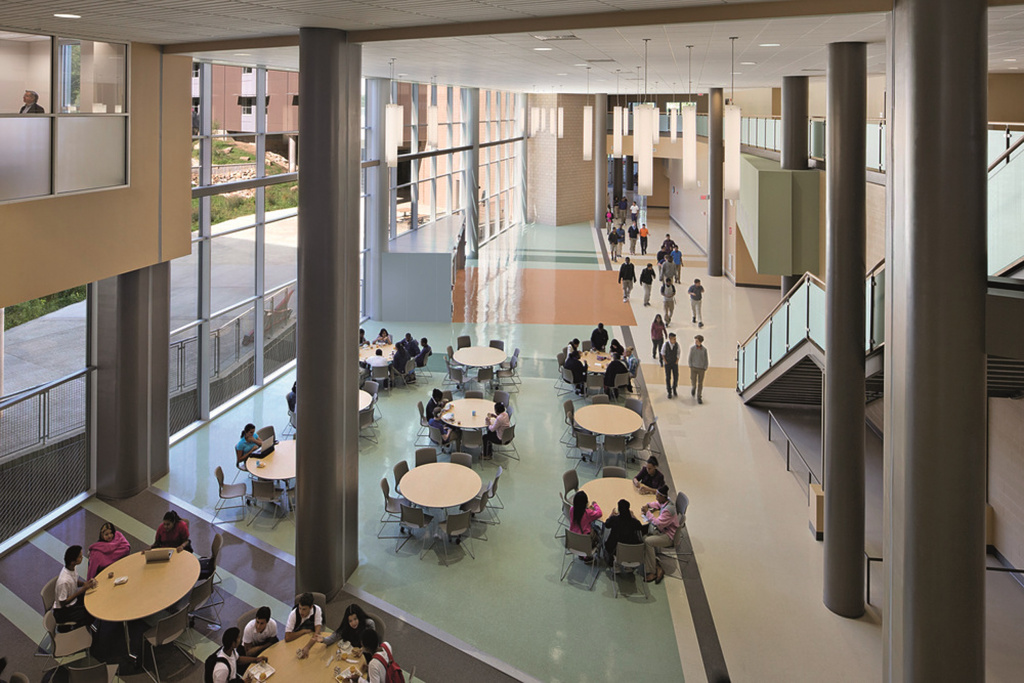You can tell a lot from the name of a school. FAIRCHILD WHEELER because the land on which the school is built, was deeded to the city of Bridgeport by philanthropists, Antoinette and Daniel Fairchild Wheeler in 1922. INTERDISTRICT because it accepts students from eight neighbouring school districts in addition to Bridgeport. MAGNET because it’s that type of US Specialist School. And CAMPUS because it’s not considered to be a single school, but campus of ‘schools-within-a-school.
And there’s something rather poetic about a Magnet School having STEM as its specialism. US Magnet Schools are a model of school that have specialisms, with the intention of attracting students from a wider demographic than just the school’s immediate neighbourhood. First established in the 1970s, their original aim was to break down any socio-economic or racial divides. And in Bridgeport Connecticut, which lies within the Greater New York area and which is reportedly one of the most economically unequal cities in America – one where just 65% of students typically graduated – never has this been more relevant.
Establishing a school to take this all on was an ambitious project, taking over ten years from the first discussions between retired Westport superintendent Claire Gold (passionate about “doing something substantial and meaningful” for disadvantaged learners, Claire had already developed the Six-to-Six Magnet School to meet the needs of working families) and Professor Lois Libby of Sacred Heart University, to the school opening in September 2013. It has resulted in somewhere where there are around four applications for every place – those places being allocated by a blind lottery and where, in their first year of graduating, 98.5% of students did, leaving the school either work-ready, (or, as over 90% of them did, well prepared for higher education). This all comes from a school that specialises in IT, another in Biotech, and the third in Engineering, organised as three ‘magnet wings’ from a central “street” that has become so prevalent in educational design – a street that houses all the central, common features of the school – sports, arts/performance and social/eating spaces, as well as the campus’ administrative offices.
And it is this beating heart that you come into when you enter the building – a double-height commons area with high-line walkways and bridges wrapping around the eastern flank allowing views to the west to the plazas and the parkland beyond. Maker Space Project Labs sit at high level at either end with glazing and wide doorways ensuring student activity – learning by doing – is visible: it is evident and on display to the whole school community. Sited here, they become semi-public spaces – used by partners as they come into the schools (although the design team recognised, for example working with the local zoo, that it was easier to take the students to see the animals than bringing the animals into the school!). “It was before the term Maker Space had become popular” explained Jim, “but there was a strong notion there would be hands on learning – kids would build things and get their hands dirty”.
And instead of the more typical auditorium, a black box theatre is located off the commons and which is used, not only for performance, but, using holographic presentation technology and digital media for live demonstrations with remote partners (Fairchild Wheeler partnered with organisations such as Sikorsky and General Electric as well as Sacred Heart and Bridgeport Universities) or collaborations, via Skype for example, on a global level. “Proposing a black box was an ‘aha’ moment in the design process” commented Jim “we’d pushed and pulled about what they wanted to be able to do in the space”. But realising this could provide somewhere for assemblies as well as robotics competitions, the school embraced the black box as their solution.
Making learning visible is clearly important to all three schools, prompting the high use of transparency throughout the building. And, as well as displaying dashboard data from their many energy-saving and conservation initiatives (more about this later), digital signage is used throughout the whole campus, both within the Commons and entrances to the magnet wings, to display and celebrate student work, engendering a sense of pride amongst learners. It also is used as an opportunity to promote interdisciplinary collaboration and awareness, advertising extra-curricular activities which, amongst many others, includes field trips that take advantage of its parkland setting.
